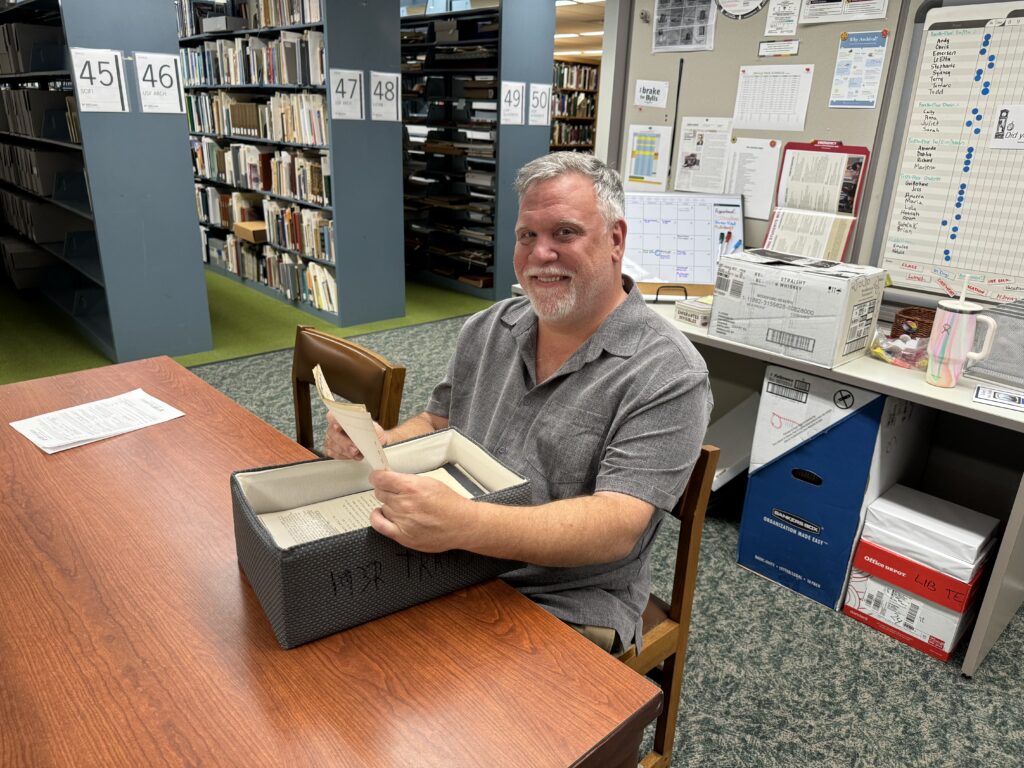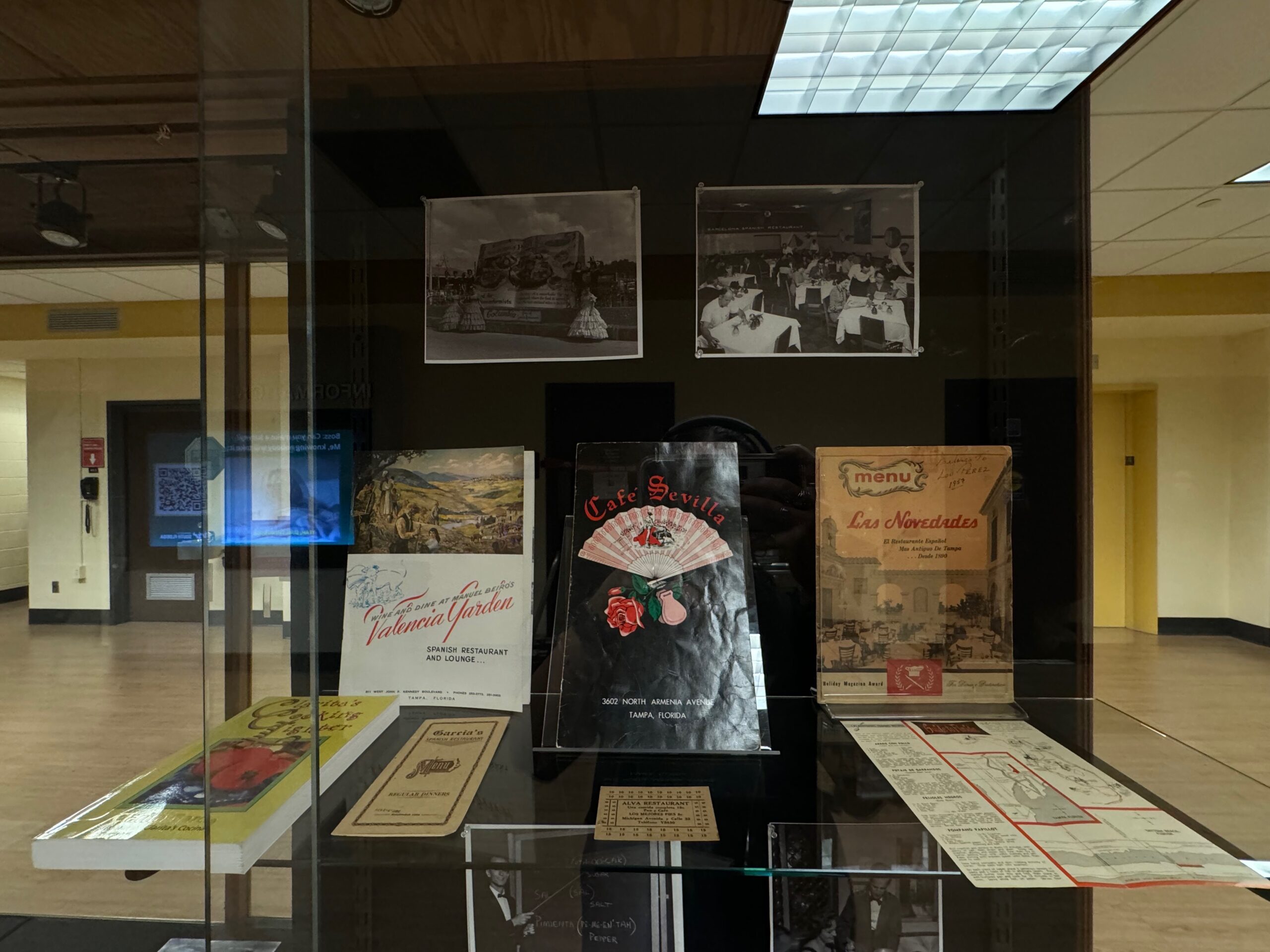By Paulina Rochelle
TAMPA- A souvenir pamphlet commemorating the 50th anniversary of the Centro Asturiano de Tampa. Programs and a songbook nearly 80 years old. Menus from historic restaurants like the Café Sevilla and the Valencia Garden. These antique treasures are contained in a shiny, glass time capsule.
The display case on the fourth floor of the USF library is home to these pieces that document key moments in Tampa’s history.
Senior Joy Bouserhal has lived in Tampa since she was 2 years old and did not know about these significant markers of its history. Even though she had been all over the city and most likely passed the places where some of these historic buildings once were, she had no clue about their stories.
“History can make these students feel a different, deeper connection to the place they live.” She reflects on why it is critical to learn about the place you live and draws similarities to forming friendships. “It’s like learning about a close friend and how they grew up, once this information is shared, your bond deepens.”
Bouserhal stumbled upon the display case one day while looking for a place to study in the library.
“Almost every student enters the library at some point. It’s where some students end up spending most of their college career studying for hours on end or passing time in between classes. It’s the best place to showcase information as it’s more likely to be seen by a variety of students who may not be aware of their city’s history.”
She found it interesting to see the old menus and pictures of what the buildings looked like in their prime. Having lived here since childhood, she’d been to Ybor and Downtown Tampa many times, but never knew exactly what it was like before. Being able to see these items on display allows her to gain some insight into what life was like in the city then. Some artifacts in the case date back to as early as 1927.
Florida Studies Curator Andy Huse has helped to tell the city’s story.

Huse was looking for a new approach to telling the story of Tampa’s past life when he decided to take a culinary route to its history.
“You can write about a sandwich, and I can still have, even freighted with nationalism, gender issues, and all this other stuff. So I felt like I wanted to do something that was a little less obvious, and more fun. You’re packaging it differently. It’s like a Trojan horse. You know, it’s packed with all these other things, so it’s like you’re marketing it as an ice cream sundae, but it’s got all these great nutrients in it, too, I guess, to make it nutritious and informational.”
He has written books like “From Saloons to Steak Houses: A History of Tampa” and “The Cuban Sandwich: A History in Layers” that focus on explaining this history to audiences. Huse speaks on the importance of sharing these stories and making sure people know what has happened in the past as it’s “almost unavoidable” that it will happen again one way or another.
“History is a vast early warning system. It might not repeat, but it sort of rhymes,” says Huse.
Tomaro Taylor, the director of the Special Collections unit, shares this thinking as well that the past and present are connected in some way.
“So much of the past has converged to put each of us here, in this moment, at this time. It’s a little bit of knowing and understanding the past and a lot of applying that knowledge and understanding where you are today. Everything operates on a continuum.”
Their efforts in doing archival work and curating exhibits that display these stories help to get this information across in ways that are accessible and interesting to students who pass by them. Without having to look hard for the information, students can easily get a quick history lesson on their city, even if they are doing something as casual as looking for a place to study.

